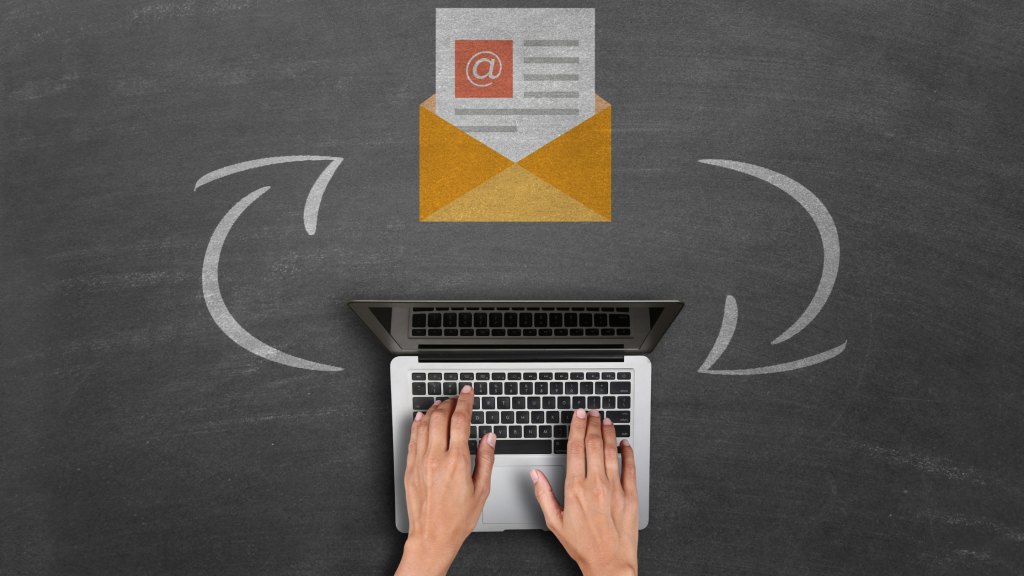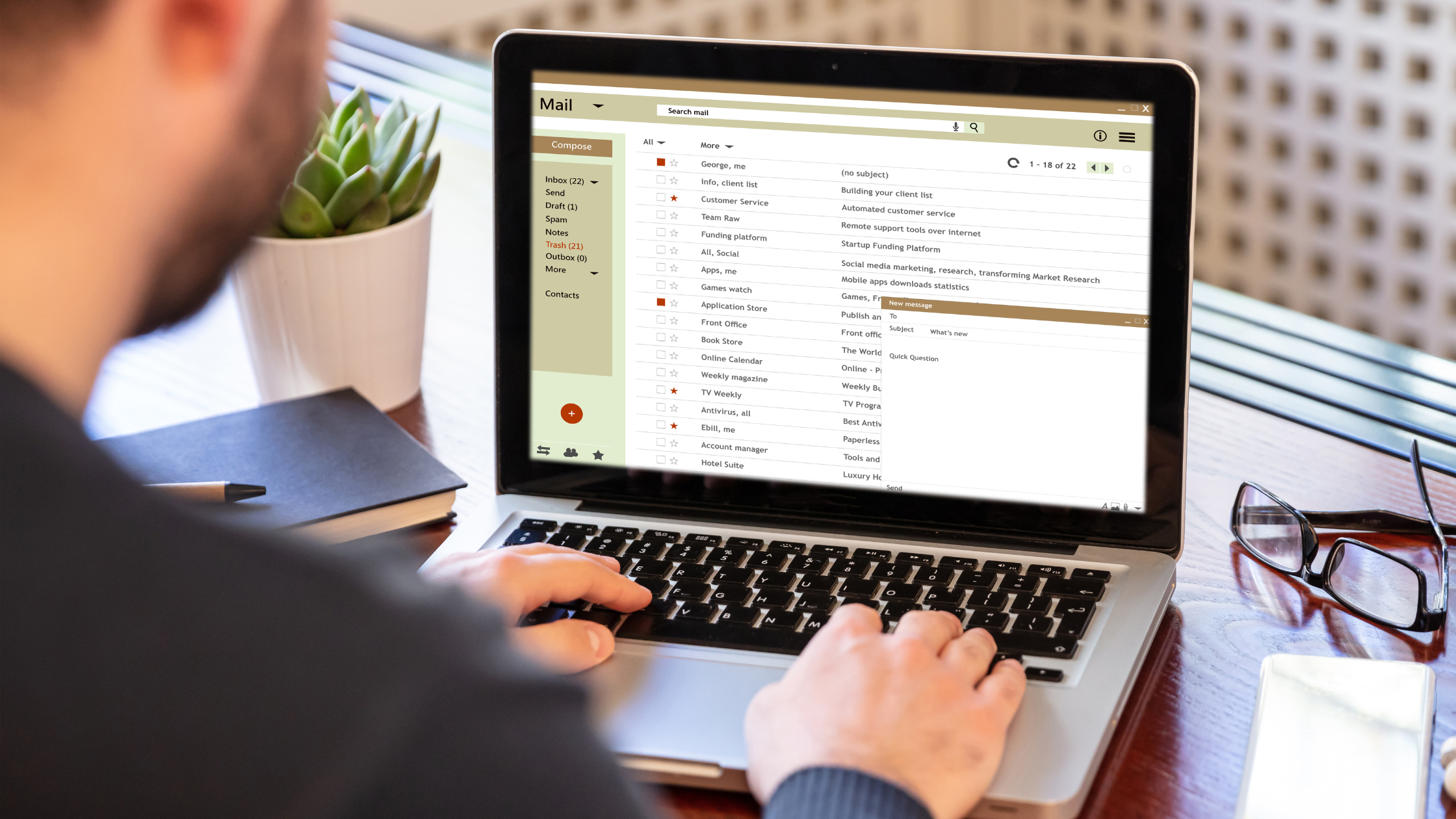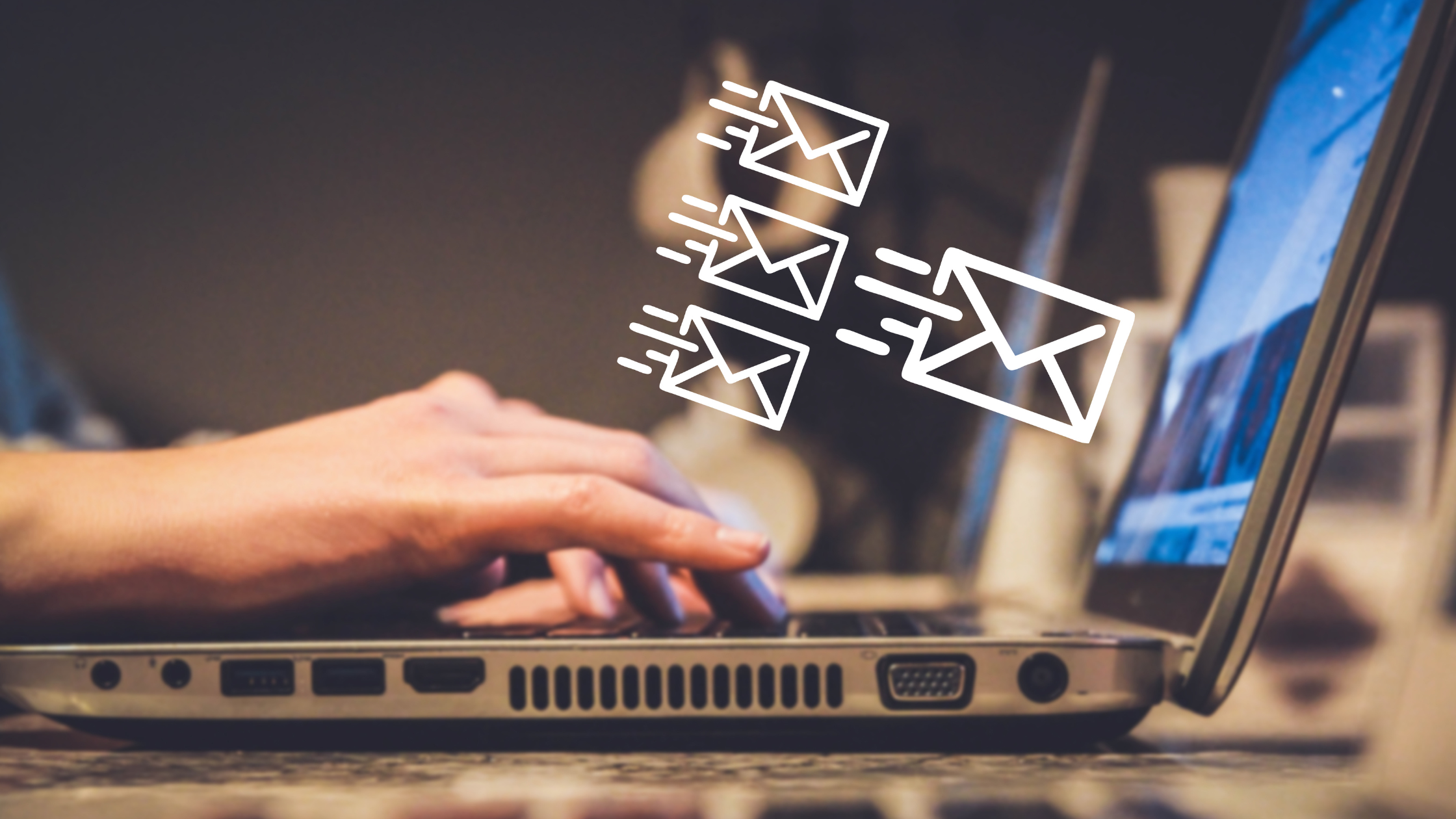Writing compelling cold emails that get responses can feel like an uphill battle. You spend time researching contacts, carefully craft your message, and…crickets.
The lack of responses could be due to many reasons, such as the length of your email, the lackluster body, a weak subject line, or poor personalization.
Crafting cold emails that encourage prospects to respond requires the right approach and a keen understanding of your target audience.
So, let’s explore the tips you need to transform your cold emails from ignored, spammy messages to engaging conversation starters!
What Are Cold Emails?
Have you ever given a thought to how business relationships are built in the real world? Often, it starts with a conversation. Imagine attending an industry event and striking up conversations with potential customers. Your goal isn’t a hard sell; it’s to break the ice, learn about the prospect’s business, and build rapport.
Cold emails replicate this approach in the online world. They’re a way to initiate conversations with potential clients who might be unfamiliar with your company – these are your “cold leads.” The objective isn’t an immediate sale but to nurture a connection and gradually “warm up” those leads.
Think of it this way: when you send an email to a potential client who’s never heard of you, that’s a cold email. It’s like reaching out to someone you haven’t met before using a publicly available email address.
Cold emails should be an integral part of your content marketing strategy because they can help you grow your business.
Similar to a cold call, a cold email is a one-on-one business conversation starter, but without the intrusiveness. It’s perfect for promoting your products or services, generating new leads, and, ultimately, building valuable partnerships.
15 Tips to Write Cold Emails That Get Responses
Writing cold emails that get responses is an undeniable part of sales. After, all 8 out of 10 people prefer to be contacted by businesses through email.
So, here are some solid tips that will help you craft cold emails and connect with potential customers:
1. Know Your Prospects Inside Out
Before crafting your cold email, invest some time in researching your target audience. This is the golden rule of cold email success.
Your goal? To understand their business, including its challenges and aspirations. The more you know about their likes, dislikes, targets, and pain points, the better. This intel allows you to personalize your email, making it stand out and grab their attention.
Luckily, the internet provides a wealth of research resources. Leverage Google searches, social media platforms like LinkedIn and Twitter, AI research tools, and industry publications to learn about potential clients. You can even explore company websites, blogs, and press releases to glean valuable insights.

2. Target the Right Decision-Maker
It’s no secret – reaching the right person is crucial for any marketing campaign, and cold emailing is no exception. While the “big boss” might hold ultimate sway in certain situations, focusing solely on them is often a dead end.
Most businesses have departmental structures where various individuals manage specific areas. To maximize your results, target the person directly responsible for the department aligning with your offering.
For example, imagine you’re a marketing agency specializing in social media campaigns. Instead of chasing the CEO of a potential client company, consider reaching out to their Marketing Director.
They are the ones who can champion your service internally, influencing decision-makers further up the chain. By impressing the Marketing Director, you give them a chance to become a company hero – a resourceful individual who identifies solutions to meet business needs, i.e., a more engaging social media presence.
3. Speak to Their Needs, Not Just Their Title
Many sales reps fall into the trap of blasting out generic emails to a massive list. But quantity doesn’t translate to quality responses. To rise above the noise and avoid the trash bin, you need to understand your prospect’s psychology.
Remember, you’re selling to a human, not a company logo. Infuse your email with empathy. The recipient is an individual driven by emotions, and emotions play a significant role in buying decisions.
A Harvard study suggests that up to 95% of buying decisions happen subconsciously!
So, how do you tap into that?
Focus on how your product or service personally benefits them. Highlight how it solves their specific work challenges. Lastly, offer them something valuable.
Here’s another tactic: try to understand their workflow. Every professional juggles unique problems, and your cold email likely isn’t high on their priority list. By researching their typical schedule, you can tailor your email timing to increase the chance of getting a response.
You can also time you emails based on when they will receive maximum engagement. For instance, 1 pm is the best time of the day to send emails based on the response rate.
By speaking to their needs and respecting their time, you’ll craft cold emails that resonate and generate real results.
4. Craft a Subject Line That Grabs Attention
Your subject line is prime real estate – it’s the first impression your email makes. A lackluster subject line guarantees your email gets buried in the inbox abyss.
Think of it as the headline for your email – similar to an article, ad, or blog post. A captivating subject line entices the reader to take action, just like a compelling headline.
Here’s what makes an effective subject line:
- Personalization: Everyone appreciates being seen as an individual. A personalized subject line stands out and grabs attention.
- Curiosity: People are naturally curious. Spark their interest by posing a question or hinting at valuable content.
- Promise: Highlight the benefit your product or service offers. What’s “in it for them”?
- Urgency: Create a sense of urgency with a limited-time offer or mention of FOMO (fear of missing out).
- Optimal Length: Subject lines between 36-50 characters get the best response rate.
Here are some examples that incorporate these elements:
- “[Name], quick question about [their challenge]” (Personalization + Curiosity)
- “Boost [desired outcome] by X% – Learn how” (Promise + Curiosity)
- “Limited time offer: Free trial of [your product]” (Urgency + Promise)
Remember: Humor can be a powerful tool, but use it cautiously. What one person finds funny, another might find off-putting.
By crafting subject lines that pique curiosity, offer value, and convey a sense of urgency, you’ll increase your chances of getting your cold emails opened and read.

5. Hook Them with Your Opening Line
Cold emails that get responses have highly impactful opening lines. Since email opening lines are displayed as a snippet in the inbox, a compelling one grabs attention instantly.
So, your opening line needs to hook the recipient and entice them to read further. Avoid generic greetings like “Hello, my name is…” While introductions are important, a more engaging approach is key.
Aim for openings that spark interest by:
- Personalizing: Reference something specific about the recipient or their company.
- Asking a Question: Pose a thought-provoking inquiry related to their challenges or goals.
- Sharing a Relevant Insight: Offer a valuable piece of information that piques their curiosity.
For example:
- “I noticed you recently published an article on [industry topic]. Your insights on [specific point] were particularly interesting.” (Personalization + Insight)
- *”Have you ever struggled with [a challenge they might face]?” (Question + Curiosity)
- “I came across a recent statistic that suggests [relevant stat] for businesses in your industry.” (Insight + Curiosity)
By crafting opening lines that are personalized, inquisitive, or insightful, you’ll reel in your audience and encourage them to keep reading.
6. Leverage the Power of Social Proof
Social proof is a powerful psychological tool. People are more likely to trust and engage with something if they see others doing the same. By incorporating social proof into your cold emails, you can significantly boost their effectiveness.
Here’s how to leverage social proof:
- Customer Testimonials: Quotes from satisfied clients showcasing the positive impact of your product or service are a goldmine.
- Numbers Don’t Lie: Highlight impressive statistics like the number of users you have or the percentage of clients who achieved specific results.
- Showcase Your Work: If you have a portfolio, samples, or case studies, share them! This allows potential clients to see the quality of your work firsthand.
- Reviews Matter: Include links to positive online reviews from reputable platforms.
- Expert Endorsements: If you’ve earned endorsements from industry leaders or celebrities, leverage them to build trust.
Strategic Placement is Key: Consider where to place social proof for maximum impact. If open rates are low, position it near the beginning to grab attention. If emails are read but not responded to, include the proof before your call to action to nudge them toward a response.
7. Keep the Email Concise and Scannable
Respect your recipient’s time! They’re likely juggling a busy schedule and bombarded with emails. So, keep your cold emails short and to the point, especially during initial outreach.
Shorter Emails = Higher Engagement: A concise email shows respect for their time and increases the likelihood they’ll actually read it.
Focus on Value, Not Volume: Prioritize quality over quantity. Don’t overwhelm them with lengthy paragraphs. Focus on delivering a clear value proposition and a compelling call to action.
Readability is Key: Use bullet points, numbered lists, and strategic white space to make your email easy to scan and digest. This will keep them engaged and more likely to take the next step.
Remember, conciseness doesn’t equate to sacrificing value. Offer maximum value in choice words to ensure you end up with emails that get responses.
8. Don’t Hide Behind “noreply@xyz.com”
The first thing recipients see in their inbox, besides the subject line, is the sender’s name. Avoid generic, robotic-looking addresses like “noreply@xyz.com.” These emails often end up flagged as spam and rarely get a second glance.
Personalize your sender name!
Use your actual name and your company’s name. This transparency fosters trust and increases the likelihood of your email landing in the inbox, not the spam folder. It also legitimizes your email.
While personalization is crucial, ensure the sender’s name isn’t too long. Most email clients have character limitations, so keep it concise (e.g., John Smith – [Your Company]).

9. Personalize Your Emails
Personalization is the golden rule of cold emailing. Generic emails get ignored. People crave the feeling of being valued and seen as an individual, and personalization delivers that.
Statistics show a significant uptick in conversion and click-through rates when emails are personalized. Moreover, emails with personalized content have 32.7% better response rates than those without any personalization.
Personalization Strategies:
- Name Game: Use the recipient’s name in the email to create a sense of connection.
- Buyer Personas: Craft emails based on your ideal customer profiles.
- Trigger Events: Respond to relevant news or industry happenings to personalize your outreach.
- Beyond Names: Incorporate details like current technology they use or mutual connections.
- Visual Appeal: Consider using personalized images or video sales letters to grab attention.
Emails that get responses are always personalized and written thoughtfully. Even statistics show personalization results in better click-through rates. Personalized email subject lines increase open rates by 50 percent. So, start personalizing your emails today!
10. Speak to the Human Inside the Decision-Maker
Remember, even a high-powered executive is a human being. They have interests, hobbies, and a life outside of work.
While maintaining professionalism is important, consider ways to inject a touch of humanity into your cold emails. However, avoid being overly familiar or unprofessional. The goal is to be relatable, not goofy.
Use the “Before-After-Bridge” framework to your advantage. Highlight a common pain point (the “Before”), then illustrate how your product or service creates a positive outcome (the “After”). This approach shows empathy and showcases the value you offer.
Additionally, tailor your communication style to your audience. Formal language might be appropriate for some recipients, while a more conversational tone might work better for others.
By infusing your emails with a touch of humanity, you’ll connect with your audience on a deeper level and increase your chances of building rapport.
11. Craft a Compelling Call to Action (CTA)
Your email should have a clear and concise call to action (CTA) so you don’t leave the audience guessing. The CTA tells the recipient exactly what you want them to do next. It provides a clear path forward and motivates them to take action.
Also, one CTA per email is optimal. Too many options can overwhelm and lead to inaction.
Examples of Effective CTAs:
- Schedule a Call: “Is there a time this week for a quick 15-minute chat? Click here to schedule a call.”
- Start a Free Trial: “Ready to see the benefits firsthand? Sign up for your free trial today!”
- Learn More: “Interested in how we can help? Download our free case study.”
Consider using questions in your CTA to prompt a yes or no response, nudging them toward engagement. (e.g., “Would you like to see a demo? Click here.”)
While closed-ended questions can be effective, don’t discount open-ended CTAs. For example, a SaaS company offering various marketing automation tools could end their email with something like “Are you struggling to manage your social media presence? Let’s chat and see how our social media management platform can streamline your workflow.”
By crafting a compelling CTA, you’ll guide your audience toward the next step in your sales funnel and increase the likelihood of conversions.
12. Highlight Your Value Proposition
In a cold email, every second counts. You have a tiny window to capture the reader’s attention and convince them to keep reading. This is why cold emails that get responses have an exceptionally strong value proposition.
Clearly and concisely convey the unique benefits of your product or service. If the recipient doesn’t understand what you offer or why it matters, they’ll likely move on.
Your value proposition should showcase what sets you apart from competitors. Why should they choose you? Offer them undeniable value, such as a guarantee or an irresistible offer.
A well-crafted value proposition shows you understand their needs and challenges and how your offering solves them. This personalizes the message and increases its relevance.
An impactful value proposition focuses on the benefit the prospect stands to receive from your offer. It’s written simply to resonate with them. It can also include numbers or stats to quantify the impact of your solution.
By incorporating a clear and compelling value proposition into your cold emails, you’ll grab attention, demonstrate value, and, ultimately, increase your response rates.
13. End the Email with a Trustworthy Email Signature
Your email signature is your chance to make a lasting impression and build trust with the recipient. Avoid overly long signatures that distract from your email’s content. Simply include these elements in the signature:
- Your full professional name
- Your job title or position within the company
- A phone number for those who prefer phone calls
- A link to your company website or a relevant online profile (e.g., LinkedIn)
By crafting a professional and informative email signature, you’ll strengthen your credibility and leave a lasting positive impression.
14. Proofread Like a Pro (Before You Hit Send!)
A cold email is often your first chance to connect with a potential client, partner, or employer. Typos and grammatical errors can leave a negative first impression that’s hard to overcome.
It’s where proofreading makes a world of difference.
After all, professionalism extends beyond your message’s content. Error-free communication reflects well on you and your company. Alternatively, emails riddled with errors can damage your credibility.
Mistakes can also lead to misunderstandings and confusion. Proofreading ensures your email conveys your message clearly and avoids misinterpretations.
Read your email out loud to catch awkward phrasing or typos you might miss while silently reading. Use spell check to catch basic errors.
Lastly, if you can, ask a colleague to proofread for you. Another set of eyes can be invaluable in catching mistakes and ultimately creating impactful cold emails that get responses.
15. Embrace the Power of A/B Testing
A/B testing allows you to compare two variations of your email to see which one resonates better with your audience.
It helps you identify the elements that drive higher open rates, click-through rates, and conversions.
A/B test the following email elements:
- Subject Lines: Consider comparing a benefit-driven approach (“Save 20% on Our Top-Rated Service”) with a curiosity-sparking option (“Unlock Hidden Revenue Streams”).
- Email Body Content & CTA: Experiment with the tone, length, and style of your email body. Test different CTAs to see which ones generate the most responses.
- Send Time: Test sending emails at different times of the day and on different weekdays to see which offers the best open rates.
- Follow-Up Strategy: Experiment with the number of follow-up emails you send, the content of those follow-ups, and the timeframe between them.
- Visuals: Explore using images, infographics, videos, etc. in your emails and track their impact on response rates.
A/B testing enables you to continuously refine your approach and write emails that get responses every time.
Ready to Write Cold Emails That Get Responses?
Finally, you have the tips and templates to write excellent cold emails that will resonate with your audience. The key to success lies in personalization, addressing genuine needs, and offering value upfront while respecting the prospect’s time.
Follow these steps to transform your cold emails into powerful tools for building client relationships and driving business growth.
However, if you don’t have the time, resources, or expertise, book a consultation with us so we can help you craft compelling cold emails that get responses!
 logo
logo



